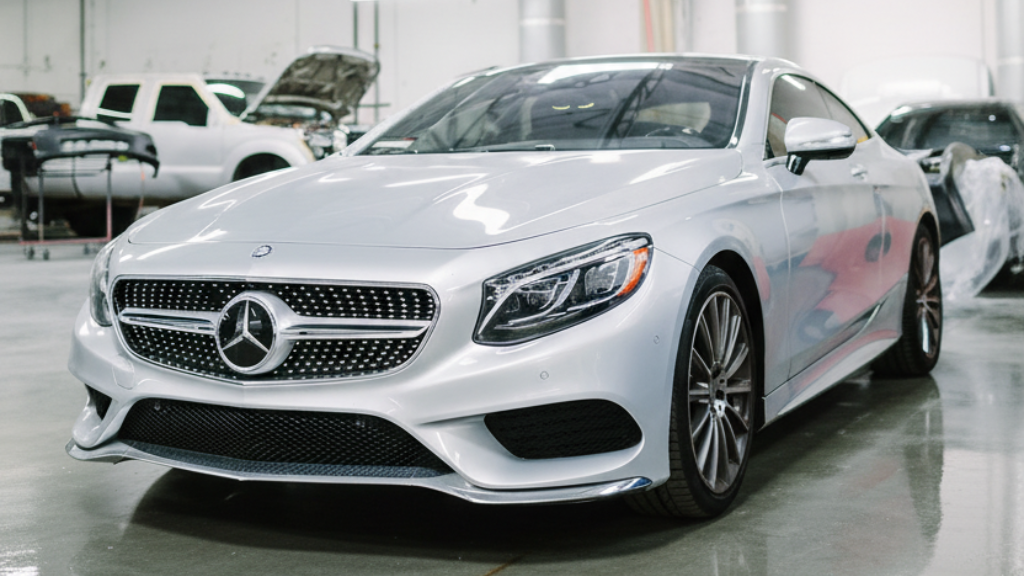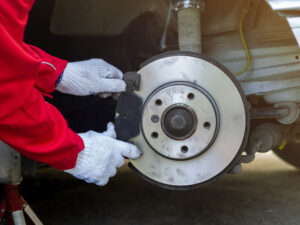Getting into an accident is stressful enough. But finally getting that call from the body shop that your car is ready? That’s a huge relief. Before you rush over, sign the papers, and drive off into LA traffic, take a few extra minutes for a post-collision repair inspection.
You want to make sure everything looks, feels, and drives the way it should. Because the last thing you want is to discover a missed repair once you’re back on the 405.
Here’s your complete guide to what to check before leaving the shop.
Table of Contents:
- Why a Post-Collision Repair Inspection Matters
- Step 1: Inspect the Exterior
- Step 2: Mechanical and Safety System Check
- Step 3: Inspect the Interior
- Step 4: Take a Test Drive
- Step 5: Review the Paperwork
- When to Speak Up
- Extra Tips for Los Angeles Drivers
- Book Your Collision Repair with Our Certified Team
Why a Post-Collision Repair Inspection Matters
Safety Comes First
Auto body repairs aren’t just about looks, they’re about restoring your car’s structural integrity and safety features. A poorly repaired frame, a missed airbag reset, or an overlooked suspension issue can put you and others at risk.
Protecting Your Investment
By doing a thorough check, you make sure the work you paid for was completed. This helps preserve your car’s resale value.
Avoiding Hassles Later
It’s much easier to point out issues while your car is still at the shop. Network Auto Body will correct problems immediately, but once you leave, it becomes a second trip and more time out of your day.
Step 1: Inspect the Exterior
Body Panels and Paint
Take a slow walk around your car and look at every repaired area:
- Check for color consistency. The paint should match the rest of the vehicle, even in bright sunlight.
- Look for smooth, even finishes. There shouldn’t be any rough spots, overspray, or drips.
- Inspect the panel gaps. Doors, hood, and trunk should line up evenly and close with a solid “click.” Uneven gaps can signal misaligned panels or frame issues.
Lights and Lenses
Test your headlights, turn signals, brake lights, and fog lights. Make sure they:
- Turn on and off properly
- Are securely mounted
- Don’t have condensation or cracks
Glass and Mirrors
Look at your windshield, windows, and mirrors for cracks, scratches, or distortion. If glass was replaced, check that it’s properly sealed and doesn’t whistle when you drive.
Step 2: Mechanical and Safety System Check
Frame and Alignment
Ask if the shop performed a computerized frame measurement. Then do your own quick check:
- Drive straight in the parking lot and see if the steering wheel stays centered.
- If the car pulls to one side, the alignment may still be off.
Suspension and Tires
- Look under the car (or have the tech show you) to make sure nothing is bent or leaking.
- Check that your tires are inflated evenly and aren’t showing unusual wear patterns.
Safety Systems
Modern cars have tons of safety tech that must be recalibrated after a collision:
- Lane-keep assist
- Blind-spot monitoring
- Backup cameras and parking sensors
- Forward collision warning
Ask the shop to confirm they performed a calibration, and test these systems before leaving.
Step 3: Inspect the Interior
Sit inside and do a quick scan:
- Dashboard lights: Turn on the ignition. No warning lights should stay on (airbag, ABS, check engine).
- Seats and trim: Everything should be reinstalled securely, with no loose panels or rattles.
- Electronics: Test your A/C, heater, radio, power windows, and seat adjustments.
Step 4: Take a Test Drive
If possible, take a short drive with a technician or service advisor. During the test drive:
- Listen for rattles, squeaks, or grinding noises.
- Test the brakes for smooth stopping (no pulling or vibrations).
- Accelerate and check for hesitation or unusual engine behavior.
- Drive over a small bump — does the car feel stable or overly bouncy?
Trust your instincts. If something feels off, mention it before you leave.
Step 5: Review the Paperwork
Before signing off on the repair:
- Ask for a detailed invoice that lists labor, parts used (OEM, aftermarket), and paint work performed.
- Confirm warranty coverage. Network Auto Body offers a warranty on paint, parts, and labor.
- Request before-and-after photos if available. They’re great for your records, especially if you sell the car later.
When to Speak Up
Don’t feel rushed. Auto body shops like Network Auto Body want happy customers and will appreciate you checking their work. If you notice any of the following, point it out immediately. It’s far better to address it while the car is still at the shop.
- A paint mismatch
- A warning light that wasn’t there before
- A strange noise while driving
Extra Tips for Los Angeles Drivers
- Check in daylight. Natural light will reveal imperfections that indoor lighting might hide.
- Ask about future maintenance. If they replaced panels or painted areas, ask if there’s a recommended waiting period before washing or waxing your car.
- Keep your estimate and photos. This documentation can protect you if an insurance company questions the repair later.
Book Your Collision Repair with Our Certified Team
A thorough post-collision repair inspection is the last step in getting your car fully restored after an accident. By taking just 15–20 minutes to check the exterior, interior, mechanical systems, and paperwork, you make sure your car is safe, looks great, and performs like it should before you hit LA’s busy streets again.
If you are looking for a certified auto body shop in Los Angeles, contact Network Auto Body today. We have five convenient locations throughout the city and would be happy to provide a free estimate.




